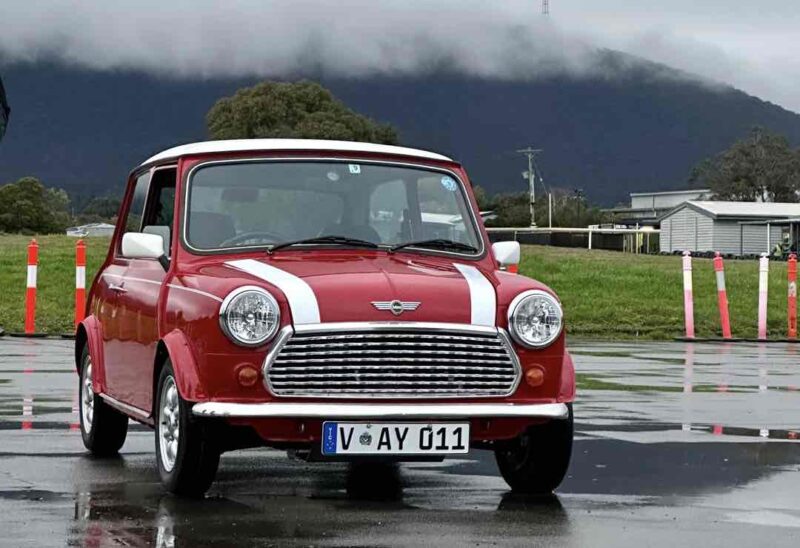Jaunt Motors has just unveiled its first Mini Cooper electric conversion, and it’s very red.
The Jaunt team have had a big year of changes. The company which specialised in converting old Land Rovers into electric vehicles, merged with UK-based conversion company Zero EV to form Fellten – a technology development company.
Now, they’ve moved on from just Land Rovers, and have been working on their first Mini – a bright red 1995 model imported from Japan.
“We put a 19-kilowatt hour battery pack in the car, and a 70-kilowatt motor. So, the battery pack is small, but it maintains the original weight and the original weight balance of the car,” Jaunt Motors CEO Dave Budge told The Driven.
“If you start messing with the weight, you start messing with what made it unique.
“We’re able to have something that has all the character and fun, but is a lot faster, and a lot easier to drive and a lot more responsive.”
In fact, Budge told readers of his newsletter that a work out on a track was mighty impressive.
“Oh. My. Gosh.” he wrote. “I know we’re biased but an electric motor is the way this should have always been powered.”
Two thirds of the battery pack is under the bonnet, while a third of the pack and the charger is in the rear. The car is also fully automatic and has had the dashboard replaced to look more like a 60s model. The total cost for the conversion was $60,000, significantly cheaper than the Land Rovers with larger batteries and motors.
Doing a WLTP range analysis, the car had a range of 170 kilometres, however Budge suggests that because it is such a small battery, it is much quicker to recharge.
“It’s still a classic car and aerodynamics are not it’s strong suit,” he said.
“The good trade-off is a 19 kilowatt hour battery pack with six kilowatt onboard charger … 20% to 80% charging, it’s an under two hour charge.”
The red Mini was able to be built in just a few weeks because most of the work for the electric battery and motor was done long before it reaches the car.
“This is not an EV conversion where it takes six months to a year before something rolls out the shop,” says Budge.
“You can buy a package and drive it in as petrol and drive it out as an EV in two weeks and have a much better car for it.”
The trick is their ‘universal battery system’, where both the motor and battery pack are designed to be able to fit almost anywhere that a small petrol engine would be.
Although Jaunt have recently moved into a bigger warehouse so they can work on multiple cars at once, they are not trying to scale up to do more car conversions – instead hoping to train vintage car mechanics around the country to install Fellten’s battery pack system.
“People can buy this great thing and do all the normal car stuff around it,” says Budge.
“All this skill exists around the country to build amazing cars. If we can take away the hard, different bit – building a high voltage, highly technical battery pack – then that makes it easy for people to do all kinds of conversions.”

